The Story Behind the Most Haunting Images of the Rohingya Exodus
Desperate Journey
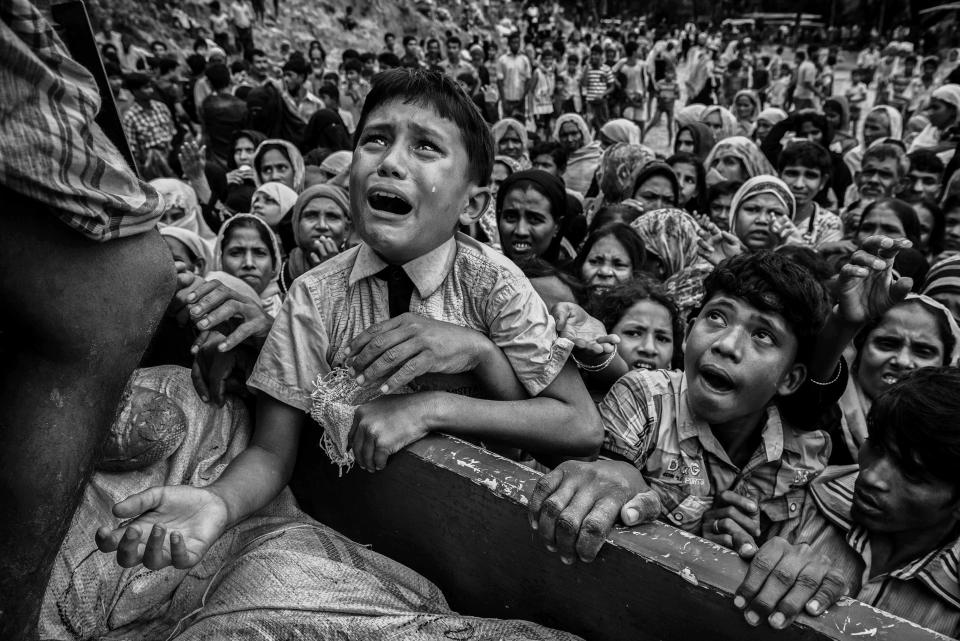
Getty Images
The Rohingya flee Myanmar
Photographs and text by KEVIN FRAYER
The boats usually arrive at night because it’s safer in the dark.
Occasionally they come during the day, when a situation is urgent enough to risk fire from Myanmar border guards, or a window for safe passage opens up. The majority arrive at the southern tip of Shah Porir Dwip, an island where the Naf River meets the Bay of Bengal. The water can be rough, but when a boat capsizes there is no search party or rescue effort, just a wait for the bodies to wash up on shore. The anonymity of it is tragic.
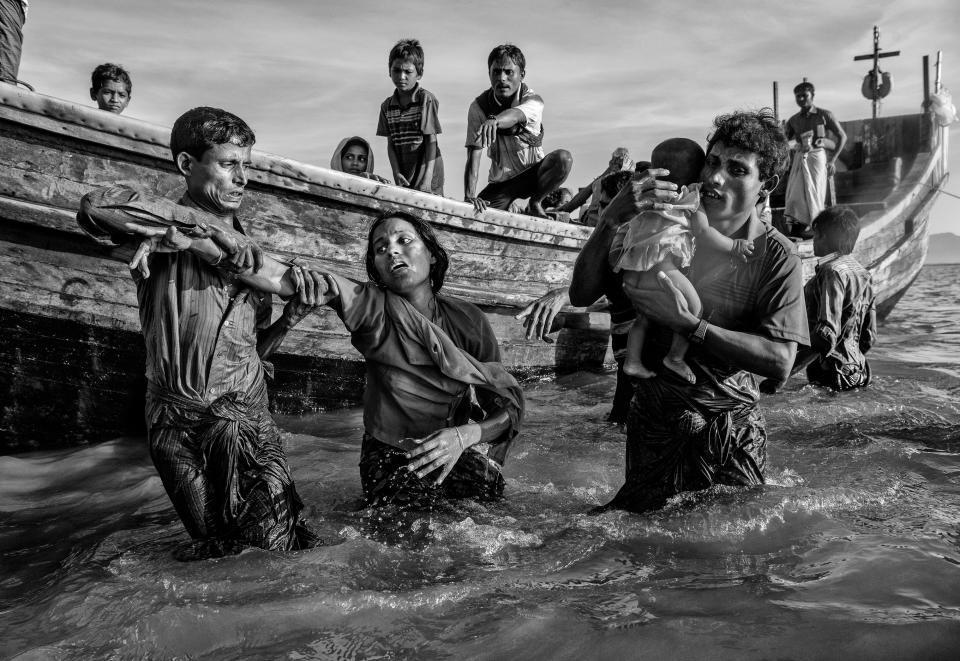
A woman arrives on the Bangladesh side of the Naf River on Oct. 1. Getty Images

Refugees make their way through the water after crossing the river to Bangladesh on Nov. 1. Getty Images

Rohingya carry their belongings after fleeing from Myanmar on Nov. 1. Getty Images
When boats make it, there is a scramble to get people out. Babies are handed off to make sure they don’t get dropped in the water; the elderly are lifted and carried, and often people are so weak and exhausted and overwhelmed that they just collapse. What’s striking is that it’s so quiet. There may be someone sobbing or a baby crying, but usually the moment they arrive is almost silent.
I first arrived in Bangladesh in mid-September, a few weeks into the newest phase of the crisis named for the people on the boats: the Rohingya are fleeing their homes in neighboring Myanmar, seeking safety across the boundary river that widens into the Bay of Bengal. I had been moved by the images and stories from colleagues—an exodus of some 600,000 people with no rights, who spoke of being burned, raped and driven from their homes.
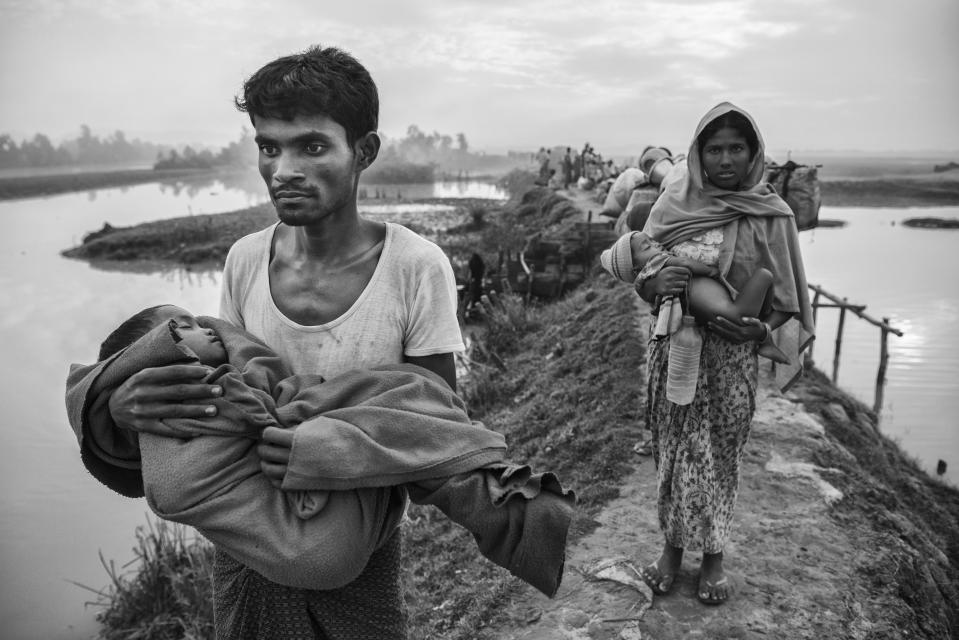
A man and woman carry their children on an embankment after crossing the river on Nov. 2. Getty Images
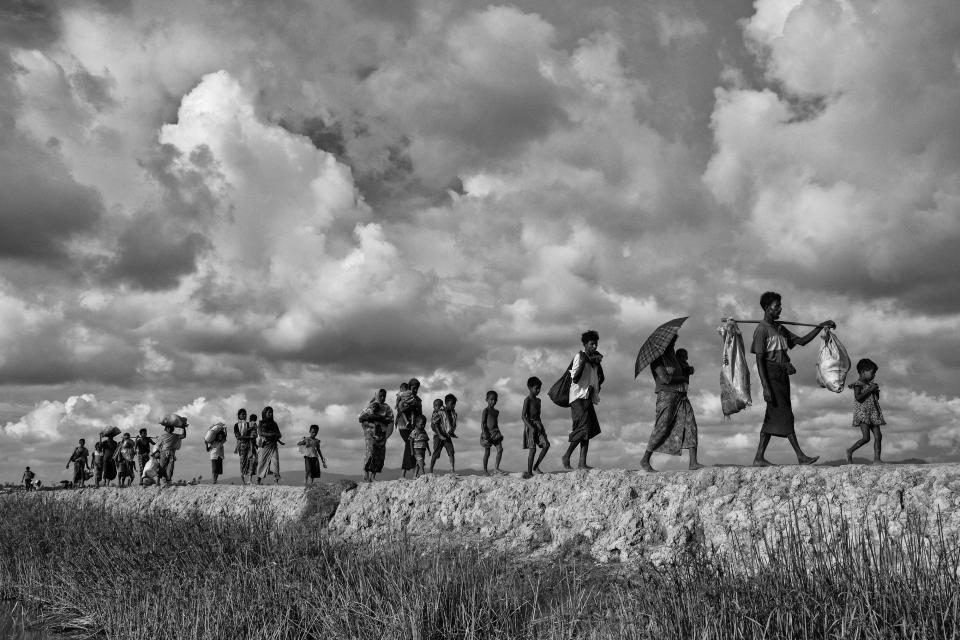
Rohingya carry their belongings after crossing the river on Oct. 2. Getty Images
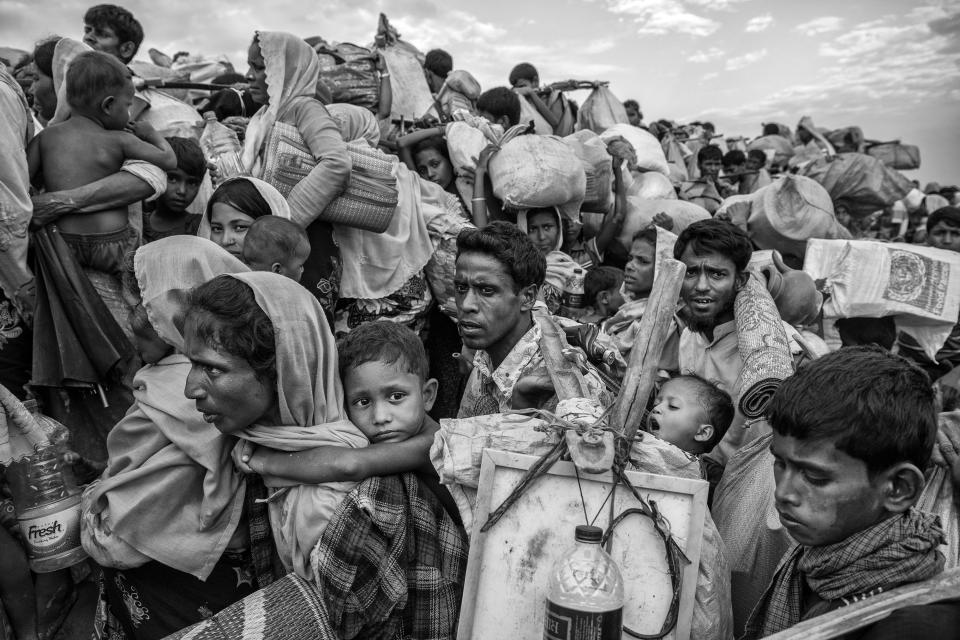
Rohingya who walked for more than a week to cross the river wait to proceed to camps on Nov. 2. Getty Images
The Rohingya are Muslim, and the rest of Myanmar, which is heavily Buddhist, has never accepted them as citizens. The constant friction flared into conflagration in August, when a militant Rohingya group attacked police and military posts. The government replied with a campaign that scorched the earth—satellite imagery shows hundreds of Rohingya villages burned to the ground. The U.N. termed it a “textbook example” of ethnic cleansing, and Myanmar’s de facto leader, Nobel laureate Aung San Suu Kyi, has been pilloried for defending the government, which claims it is targeting insurgents.
In the text of the last speech on his Asia trip, President Donald Trump supported efforts “to ensure accountability for the atrocities committed.” Meanwhile, the exodus continues.

Rohingya who walked for more than a week to cross the river wait to proceed to camps on Nov. 2. Getty Images
Typically, new arrivals sit on the beach and just rest. A few locals may be around, but there is no coordinated reception. The refugees walk on their own toward the village and madrasahs, or religious schools, where they are given shelter and food and a bit of money by local charities. They will spend at most a day there before crossing to the mainland and climbing onto trucks for the journey north to Cox’s Bazar. Once known for its resorts, the area is now home to more than half a million refugees.
Once new arrivals find a space, they get bamboo poles and tarpaulin to build a shelter. Aid organizations construct latrines and dig wells for clean water, but the sheer number of people makes it a challenge to maintain sanitation and stave off disease. The monsoon rains are heavy and frequent, and the ground is incredibly wet and muddy.
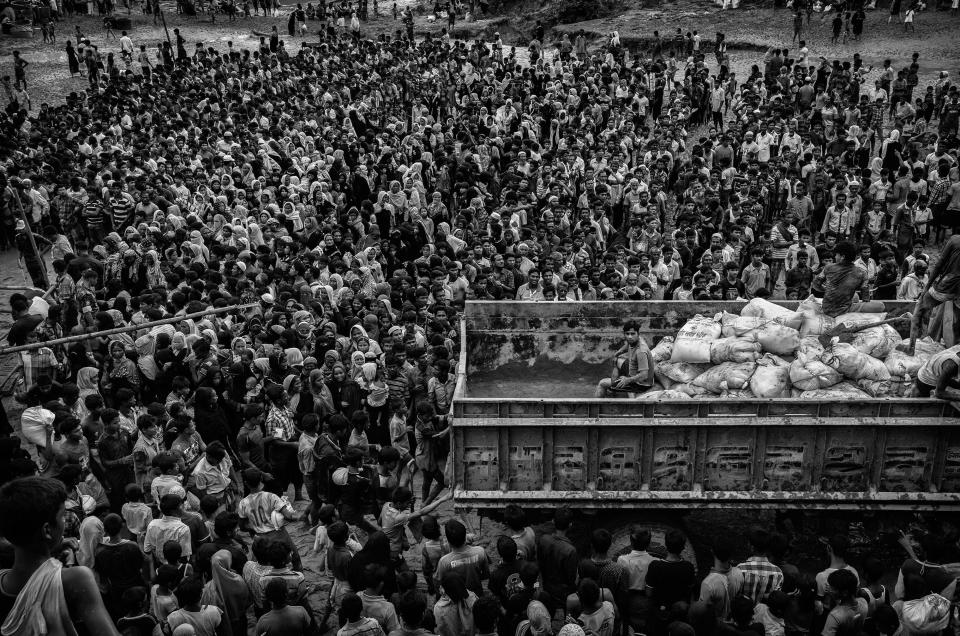
A local NGO distributes food near the Balukhali camp on Sept. 20. Getty Images
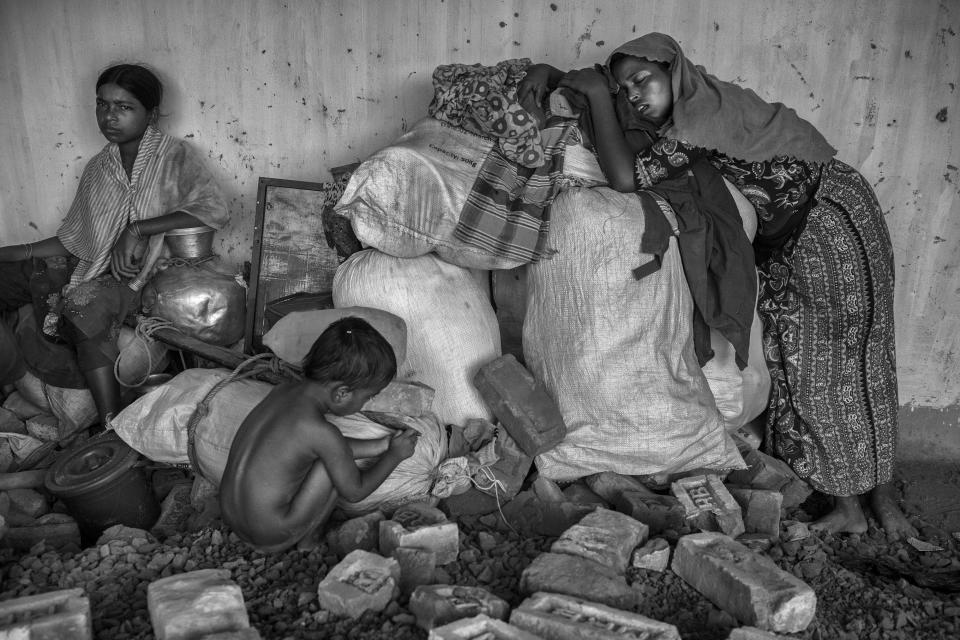
A woman collapses from exhaustion after crossing the river on Sept. 25. Getty Images
Still the makeshift camps are becoming a permanent part of the landscape. When I visited in late October, there was far more aid than a month earlier, and more international agencies to help. But the flow of people persists, and the camps grow at a staggering rate—some days by a few hundred, other days by thousands.
One afternoon in September, I went to an area where a crowd of people were looking for aid. I could feel the anxiety as the crowd shifted. I was struggling to work, so I wanted to get above it. As I climbed on a truck, women were shouting and people were distraught, since they were obviously exhausted and hungry.
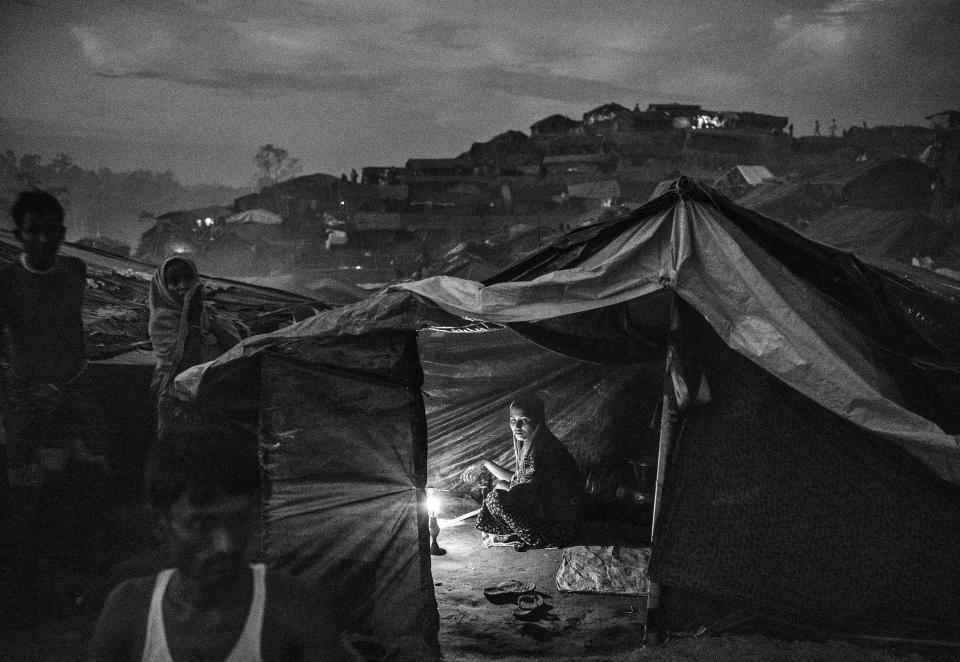
A woman uses a candle to light her tent at the Palong Khali camp on Oct. 1. Getty Images
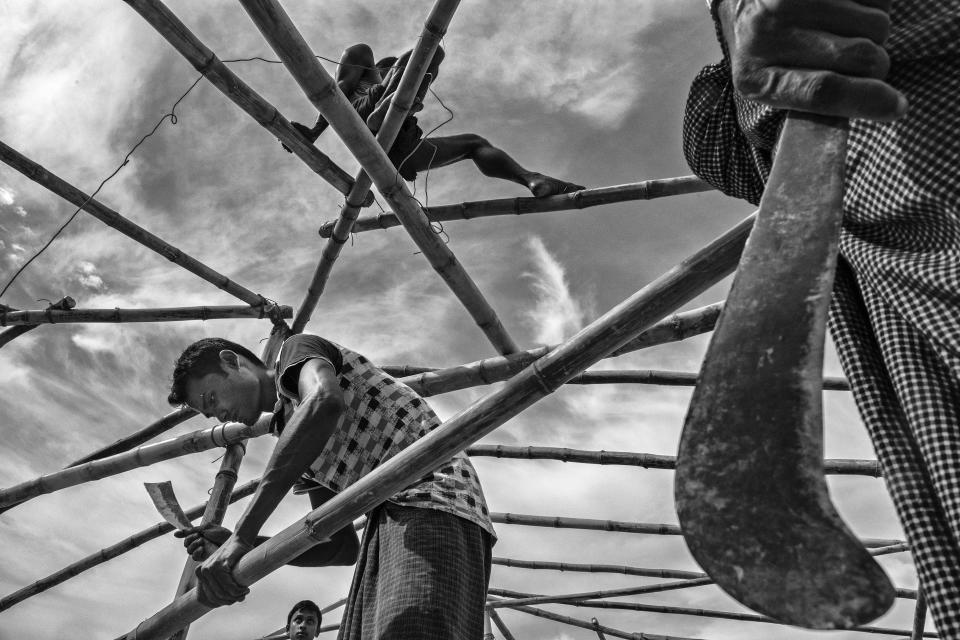
Refugees build a new mosque at the Balukhali camp on Oct. 2. Getty Images
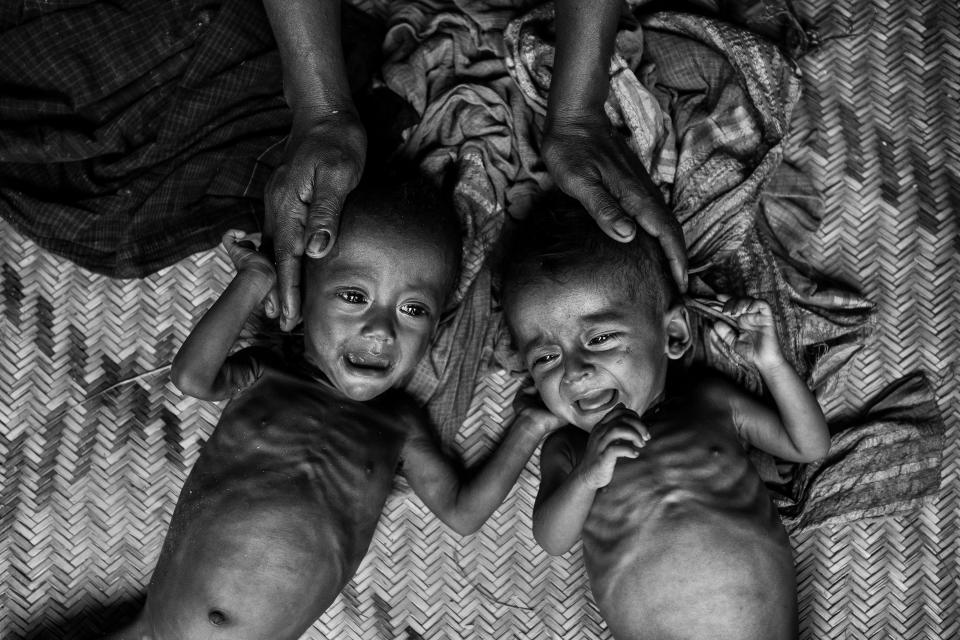
Malnourished children cry at a shelter at the Balukhali camp on Sept. 27. Getty Images
That’s when I saw this small boy to the left of my view. He had pulled himself up onto the truck and was weeping. I couldn’t hear much because the scene was so loud, but at one point the boy reached out his hand and tapped the leg of the man standing over the food.
He then wrapped his arms around the man’s leg, begging with tears rolling down his cheeks. I was struck by it: this vulnerable child in a massive crowd had clawed his way onto the truck in complete desperation. It is hard to compare that magnitude of sadness to anything else I have seen.
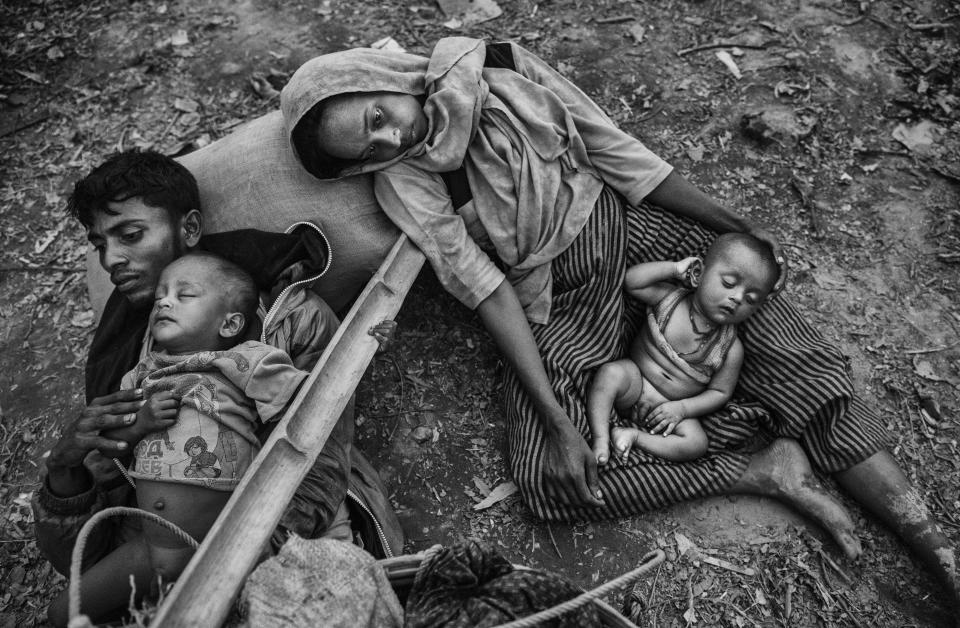
A family rests after crossing the river on Oct. 2. Getty Images
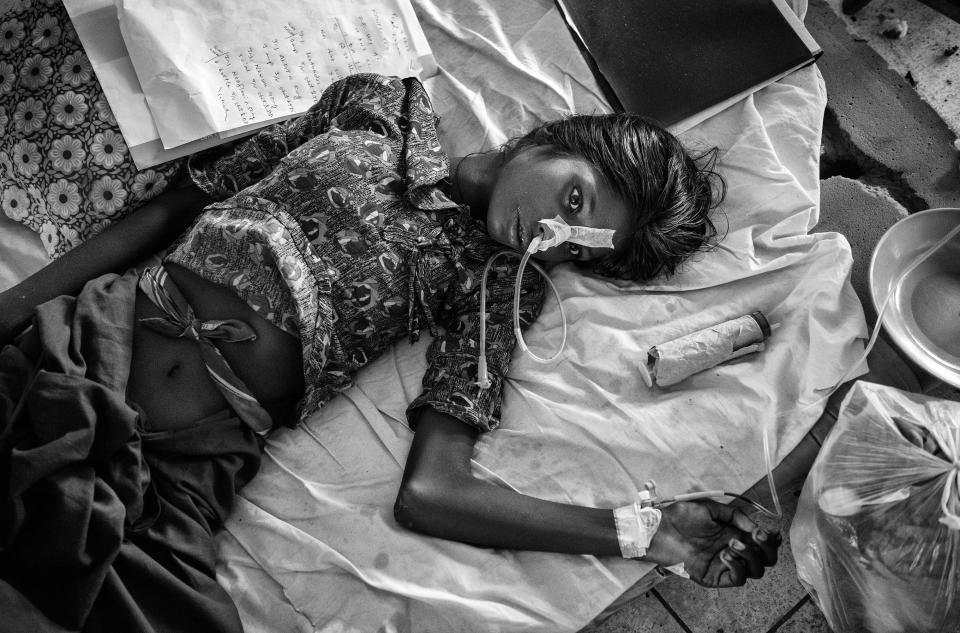
A woman suffering from malnutrition and diarrhea lays at a hospital on Oct. 2. Getty Images
Leaving was not easy. I had gone with the hope of making a contribution to telling the story, yet you always feel like you never photograph enough. Or see enough. Or hear enough. If the pictures—no matter how fleeting—can cause people to be moved to care in some way, then it is worth it.
For this kind of story, the more photographs, the better.
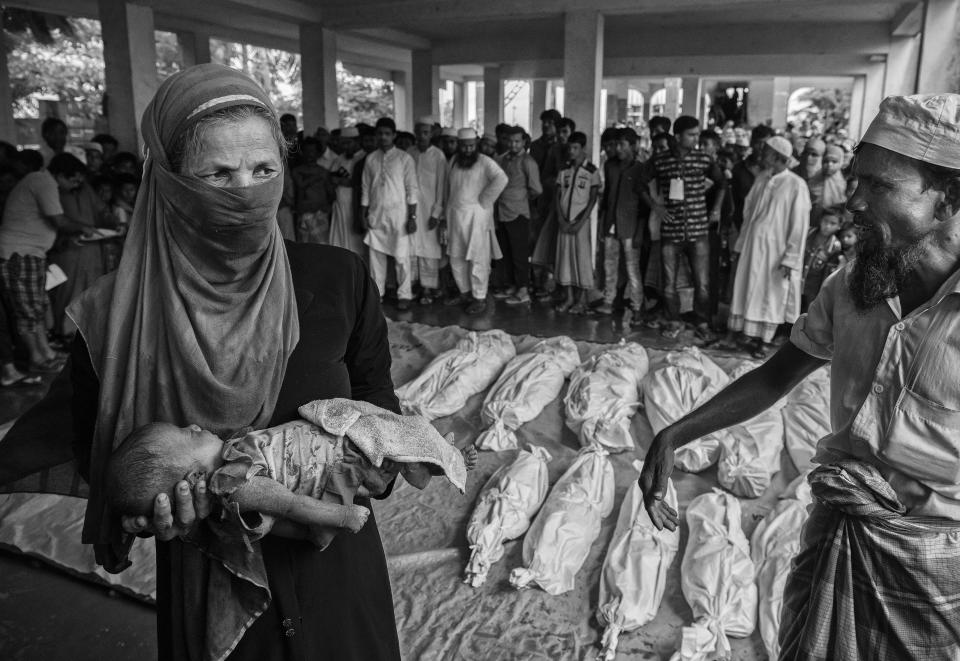
A woman cradles the body of a boy before burial on Sept. 29. Getty Images
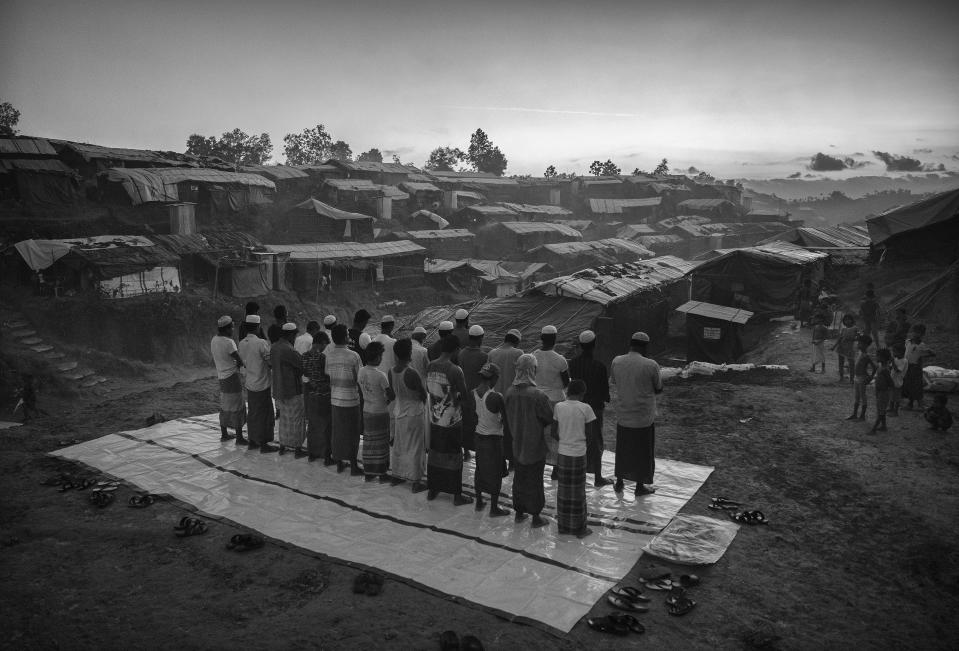
Men pray at sunset on the site where a new mosque was being built at the Balukhali camp on Oct. 22. Getty Images
Originally published: Oct. 15, 2017 | Updated: Nov. 17
Kevin Frayer is a Getty Images photographer based in Beijing. Follow him on Instagram @kevinfrayer.
Andrew Katz, who edited this photo essay, is TIME‘s Senior Multimedia Editor. Follow him on Twitter @katz.

